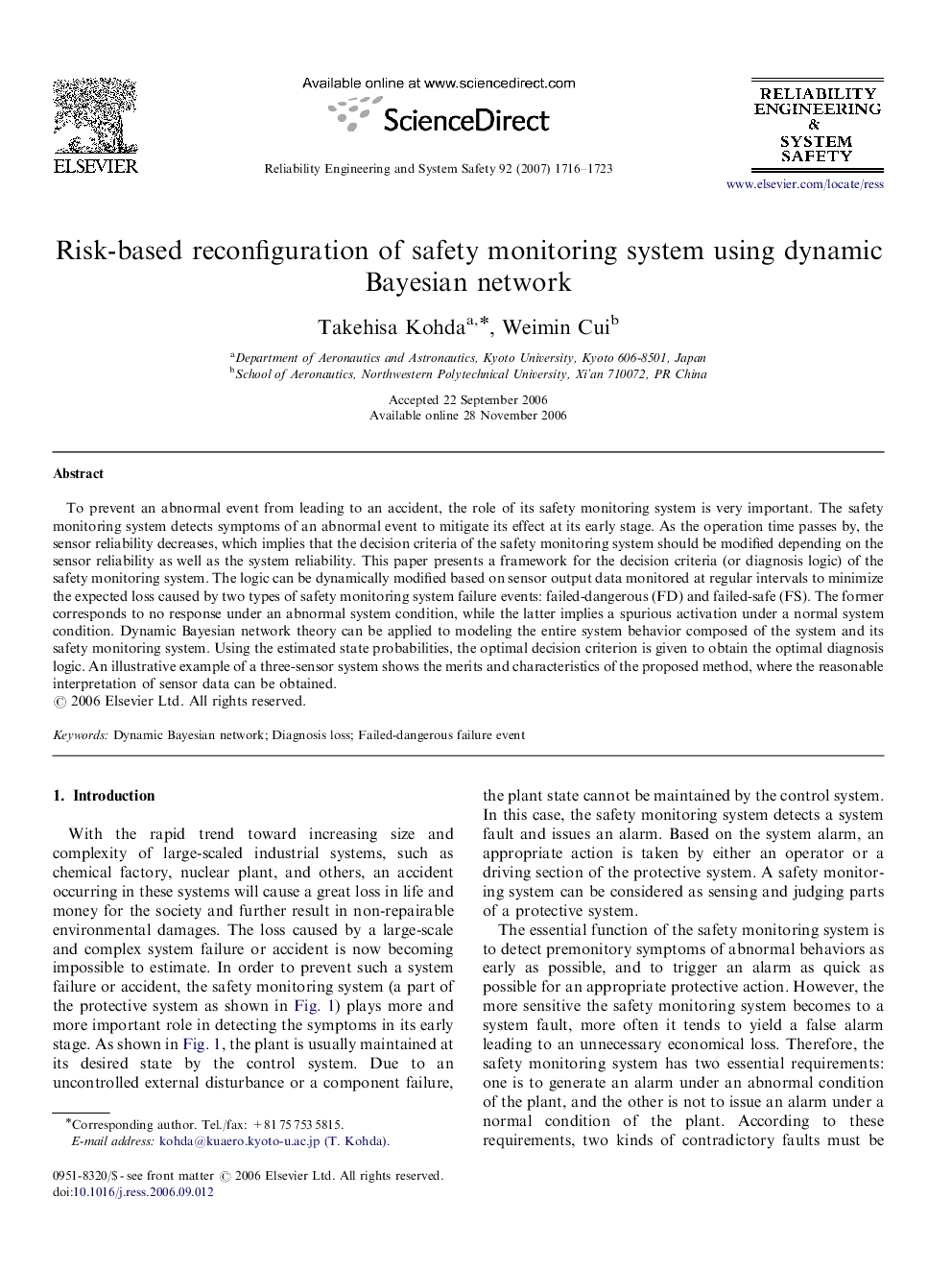| Article ID | Journal | Published Year | Pages | File Type |
|---|---|---|---|---|
| 808319 | Reliability Engineering & System Safety | 2007 | 8 Pages |
To prevent an abnormal event from leading to an accident, the role of its safety monitoring system is very important. The safety monitoring system detects symptoms of an abnormal event to mitigate its effect at its early stage. As the operation time passes by, the sensor reliability decreases, which implies that the decision criteria of the safety monitoring system should be modified depending on the sensor reliability as well as the system reliability. This paper presents a framework for the decision criteria (or diagnosis logic) of the safety monitoring system. The logic can be dynamically modified based on sensor output data monitored at regular intervals to minimize the expected loss caused by two types of safety monitoring system failure events: failed-dangerous (FD) and failed-safe (FS). The former corresponds to no response under an abnormal system condition, while the latter implies a spurious activation under a normal system condition. Dynamic Bayesian network theory can be applied to modeling the entire system behavior composed of the system and its safety monitoring system. Using the estimated state probabilities, the optimal decision criterion is given to obtain the optimal diagnosis logic. An illustrative example of a three-sensor system shows the merits and characteristics of the proposed method, where the reasonable interpretation of sensor data can be obtained.
